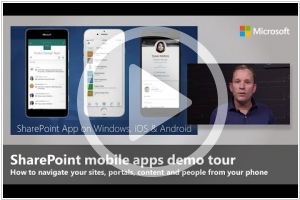HCL Digital Experience vs SharePoint
May 21, 2023 | Author: Michael Stromann
2
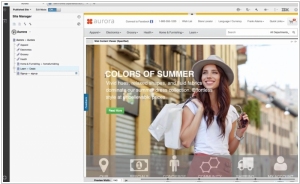
Create an intranet with authenticated access to core applications to improve employee productivity and training and help them get their work done. Help customers get secure, personalized access to their accounts and self-service options, and reduce service costs. Improve the secure exchange of information and applications with suppliers and partners.
59

SharePoint's multi-purpose platform allows for managing and provisioning of intranet portals, extranets and websites, document management and file management, collaboration spaces, social networking tools, enterprise search, business intelligence tooling, process/information integration, and third-party developed solutions. SharePoint can also be used as a web application development platform.
HCL Digital Experience and SharePoint are two popular enterprise content management platforms that help organizations effectively manage their digital assets and facilitate collaboration among teams. HCL Digital Experience, formerly known as IBM WebSphere Portal, offers a comprehensive suite of features including content management, web publishing, personalized experiences, and integration capabilities. It focuses on delivering engaging and personalized digital experiences to users across various channels. On the other hand, SharePoint, developed by Microsoft, provides a robust platform for document management, team collaboration, and intranet portals. It offers features such as document version control, workflow automation, and integration with other Microsoft products.
See also: Top 10 Enterprise Portals
See also: Top 10 Enterprise Portals
HCL Digital Experience vs SharePoint in our news:
2021. Google and HCL team up for Digital Experience platform
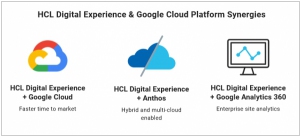
The HCL Digital Experience (DX) platform is now available on Google Cloud, offering clients access to the comprehensive solutions provided by Google Cloud, whether they choose to run their applications on-premises or on other cloud platforms. With this integration, HCL Digital Experience customers can continue leveraging the trusted and reliable features of HCL's Digital Experience platform, while also harnessing the global scalability, security, and flexibility offered by Google Cloud. Furthermore, HCL DX customers will have valuable insights into their customers' interactions with their website, thanks to seamless integration with Google Analytics 360 and HCL Unica Discover. This integration empowers businesses to optimize their customer journeys and enhance overall digital experiences.
2018. IBM sold Lotus Notes/Domino, Websphere Portal and other software to HCL
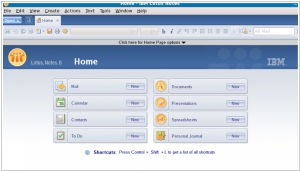
IBM is in the process of selling its renowned enterprise collaboration software, Lotus Notes, to the Indian company HCL for $1.8 billion. These products have been a significant component of IBM's enterprise business for a considerable period. However, last year, IBM began divesting the development segment to HCL while retaining control over sales and marketing. With the platform's development now outside of IBM's purview and the need for funds after a $34 billion expenditure on Red Hat, it appears that IBM decided it was no longer viable to retain any part of Lotus Notes in-house. On the other hand, HCL recognizes an opportunity to further develop the Notes/Domino business and is seizing it through this acquisition. HCL's interest in Notes/Domino surpasses what IBM has shown over the past decade, as they are heavily investing in rejuvenating the brand. Notes and Domino still maintain a presence in various enterprise sectors, particularly in EMEA (Europe, Middle East, and Africa). This strategic move aligns with IBM's shift towards advancing its cloud business in a different direction. The acquisition of Red Hat in October, in particular, demonstrates IBM's focus on embracing private and hybrid cloud deployments, whereas older software like Lotus Notes and Domino have limited relevance in this new realm.
2018. SharePoint gets organization-wide news and content targeting
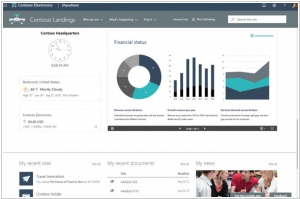
Microsoft has recently announced several enhancements for SharePoint and Office 365 sites, bringing new capabilities and functionalities. Among the notable updates is the introduction of a designated communication site that serves as the official news portal for the organization. This allows news posted on the portal to be easily identified with a special indicator, ensuring clear visibility on both mobile devices and the SharePoint home page. Additionally, a new feature enables the targeting of content to specific audiences based on their Active Directory (AD) Group membership, including dynamic groups. Moreover, SharePoint sites now have the ability to create mega-menus for navigation, facilitating improved user experiences and seamless site exploration. These advancements aim to enhance communication, personalization, and navigation within SharePoint and Office 365 sites.
2017. SharePoint 2016 finally added SharePoint Framework Support
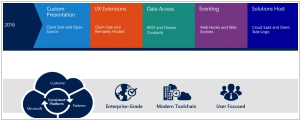
Microsoft's objective in launching SharePoint Framework into general availability in February was to attract a wider pool of developers to the SharePoint ecosystem. Now, with the introduction of SharePoint Feature Pack 2 (FP2), the company extends Framework support to users of SharePoint 2016. Framework serves as a page and web part model, offering comprehensive assistance for client-side SharePoint development, seamless integration with SharePoint data, and compatibility with open source tools. This release simplifies the process for SharePoint 2016 users and third-party developers to construct solutions centered around SharePoint.
2017. SharePoint Framework is generally available

Microsoft has introduced the SharePoint Framework, empowering developers and administrators to construct and deploy components that are utilized by Office 365 users within their production environments. This advancement entails leveraging web technologies to create agile, responsive, and notably mobile-friendly applications on SharePoint. While SharePoint has served as an application and development platform for a considerable duration, the release of the Framework marks a significant stride in enhancing the developer experience. Historically described as unwieldy and challenging, the SharePoint Framework introduces improvements that address these concerns.
2016. Microsoft connects SharePoint Team Sites to Office 365 Groups
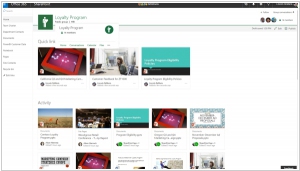
Microsoft is rolling out the integration of SharePoint and Office 365 team sites, introducing a new feature that enables the creation of interconnected SharePoint Online team sites within seconds. This integration simplifies the process as follows: Whenever an Office 365 Group is created, the service automatically generates a SharePoint team site. The appearance of the site can be customized by the team site administrator and includes various elements such as pages, lists, libraries, and team news. SharePoint team sites serve as collaborative spaces where teams can effectively communicate, share documents, and collaborate on projects. They are user-friendly and facilitate the creation of dedicated sites for each project undertaken by the team. Moreover, team sites are easily accessible across multiple devices, making them suitable for mobile workers as well.
2016. Microsoft released SharePoint for Android
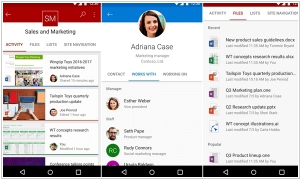
Despite Microsoft's withdrawal from actively competing in the mobile OS market for the past two years, the company has been notably sluggish in releasing Android apps. However, Microsoft has finally unveiled its SharePoint mobile client specifically designed for Android smartphones and tablets. This application offers users the ability to collaborate within team sites and access documents stored in SharePoint across various categories, including Sites, Links, and People. To utilize the SharePoint app, organizations must have an Office 365 subscription that includes SharePoint Online. Support for SharePoint Server 2013 and SharePoint 2016 will be incorporated at a later stage. Earlier this year, Microsoft released SharePoint mobile apps for iOS and Windows Phone, with the latter app still being in the preview stage.
2016. Microsoft brings SharePoint to iOS
Microsoft has introduced a new mobile application for SharePoint users, designed to provide access to a company's SharePoint-powered intranet portal and its content on smartphones and tablets. Initially available on iOS devices such as iPhones and iPads, the app will be extended to Android and Windows platforms by the end of the year, according to Microsoft. The app is compatible with both SharePoint Online in Office 365 and SharePoint Server 2013 or 2016 in on-premises or hybrid environments. It includes a Sites tab that enables users to visit their frequently accessed SharePoint sites, view recent activity, access files, lists, pages, and other content on those sites. Additionally, the app integrates with other Microsoft mobile applications, allowing seamless transitions between apps. For instance, clicking on an Office document in the SharePoint app will open the corresponding Office mobile app, while viewing a document library on a team site will redirect users to the OneDrive mobile app for iOS.
2016. SharePoint adds new document libraries
Now that SharePoint 2016 has arrived, Microsoft is gradually introducing SharePoint Document Libraries to its commercial Office 365 subscribers through SharePoint Online. These new document libraries represent a more user-friendly approach to SharePoint, allowing users to conveniently access documents, modify document metadata, and prioritize content within the document library. This development is significant as it addresses longstanding criticisms of earlier versions of SharePoint regarding usability challenges. Throughout the extensive lead-up to the release of SharePoint 2016, Microsoft pledged its commitment to enhancing the user experience.
2013. IBM kills Lotus. Microsoft kills SharePoint
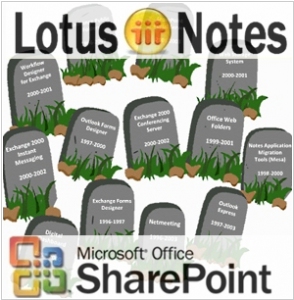
Perhaps the two most famous brands in the history of enterprise software, Lotus and SharePoint, will soon disappear. We mean brands, not specific products. Because by renaming their products, vendors try to erase the association with outdated technologies in customer brain. For example, Lotus appeared back in the 80-s years of last century. In 1995 IBM acquired Lotus Development and began selling their products Lotus Notes/Domino. In the following years most IBM collaboration systems moved under the Lotus umbrella. But last year the revolution occurred. The last child of the Lotus family - SaaS suite LotusLive was renamed to SmartCloud for Social Business. And then the name Lotus was removed from other products. The final nail was the recent launch of Notes/Domino 9.0 Social Edition (without Lotus). ***

